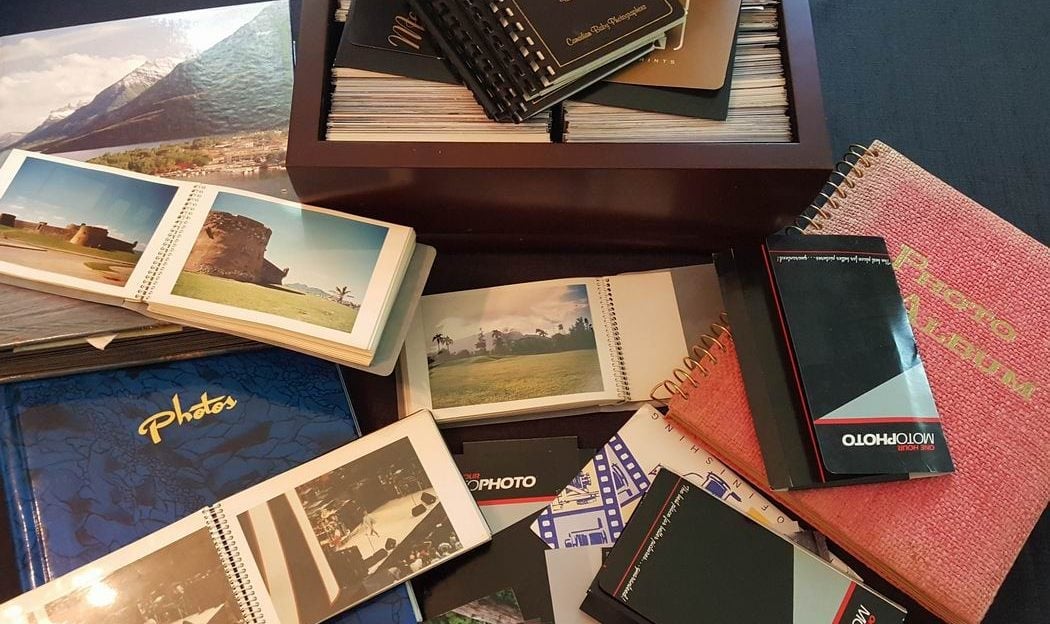 Are you drowning in photos that you forgot you even had?
Are you drowning in photos that you forgot you even had?
If you’re like many of us who have thousands of photos clogging up our phone storage and digital cameras, keeping track of them becomes next to impossible, never mind being able to enjoy them again.
And it’s not just digital photos. While printed photos may not be nearly as popular as they once were, chances are you have a bunch of them lying around, too.
That’s why these quick tips on the best ways to organize and store your photos can be invaluable.
It might seem daunting at first, particularly if you’ve never “decluttered” your photos before. It’s kind of like the idea of having to declutter your whole home — where do you start? But once you clear out the backlog, if you get into the habit of doing a little bit at a time and doing it regularly, staying on top of your photos can be simple.
So, where do you start?
#1. What’s your goal: The first thing to do is decide what you want to do with all your photos. Do you want to preserve them for future use, have quick and easy access for a special project like a birthday slideshow, or just be able to reminisce?
Knowing your goal will help you to prioritize as you go through your photos.
#2. Where are they: Next, take stock of where you have photos stored. For prints, are they in albums, tossed into a drawer or stuffed in boxes that are scattered around the house?

Is your phone chock full of photos?
Digitally, are they all on your phone, have they been downloaded to a computer or the cloud? If on a computer, they could be in more than one spot. Searching for files with a .jpg or .jpeg extension will help you find them all. Don’t forget to check things like your email and social media accounts.
Once you know where they all are, gather them together in one spot to make it easier to start working through them. That could be a temporary folder on your computer or a room in your home that gives you enough space to spread out and leave things out until you’re done.
Try setting aside an hour at a time, whether that’s every day, once a week or some other frequency. An hour will give you enough time to make progress at each sitting without burning out.
#3. Your organization plan: How to organize your photos can be done many ways and is really up to the individual. Some good examples include by year (or even by decade), by subject, by theme or by event.
One easy way to organize digital photos is by year with sub-folders by subject or theme. For prints, many of which are often much older, you may not remember the year. In that case, grouping by a decade or subject matter might be easier.
#4. The hard part, editing: Going through thousands of photos is going to be time consuming, but there’s no getting around it.
For prints:
- First, discard duplicate or poor-quality photos.
- Group related photos together and organize into the storage system you’ve decided on.
- If you have older “sticky” photo albums, consider removing the photos (easily done by sliding dental floss under the photos) in favour of another storage/organizing option. The albums take up a lot of space and the sticky pages are covered with acidic glue strips and plastic that can cause the pictures to deteriorate. It’s a good idea to write identifying information on the back of the photos, if you remember what they are. Just be sure to use an acid-free, photo-safe pencil or pen (available at art supply and crafts stores).
- Over time, prints can become damaged by things like sun, humidity, heat and mould. For this reason, you might want to consider converting your old prints to digital files. There are several ways you can do this, from scanning yourself to camera shops, big box kiosks and online services. Then it becomes a personal choice of whether or not to keep the originals.
- If you want to keep the originals, you can store them in folders, shoe boxes and craft store photo boxes (handy for many 4×6 prints), or more carefully preserve them in photo-safe boxes. Some experts swear by photo boxes, but you’ll be spending a lot more if you go this route. The main thing is to figure out a spot to store your photos that’s dark, dry and cool, like a closet. And avoid plastic storage containers, which can trap moisture.
For digital photos:
- There are several photo management programs you can use. They include iPhoto, Picasa, or Windows Live Photo Gallery. In this March 2018 post, Techlicious lists the best apps for organizing your photos, both for your smartphone and for your computer.
- First, delete duplicate or poor-quality photos.

- Group related photos together and if you notice you have way too many of the same thing, like 25 shots of your dog being a goof rolling around in the grass, pick a few of the best and delete the rest.
- Organize your photos into the folder system you’ve decided on.
- Then rename them so that the files will make sense to you. There are often easy ways to rename a group of related photos, rather than having to do them individually. Here are some tips on how.
- If you like to edit your photos, do it at the same time you’re renaming them.
- If there are any you want to have made into prints, don’t trust your home printer, which is not likely to print a quality photo. But prints are easy enough to get at camera stores, big box outlets and through online services.
#5. Be sure to back up: Once you’ve organized your photos, make a backup. “Never fully rely on a single storage space,” says Nasim Mansurov of Photography Life. “All electronic equipment fails at some point of time and leaving your precious data in one place is like putting all of your eggs in one basket.”
Whether you’re looking to store your photos on a hard drive, a CD/DVD or a memory stick, decide at the same time where you will back them up, and use a different medium to do so. It’s also a good idea to keep your backup in a different physical location. If you store both in your home and you have a fire, you’re likely to lose both.
#6. Delete source photos: With your photos downloaded, organized, filed and backed up, you can now delete the photos at the source, meaning on your phone or camera, to free up valuable space for new photos. Of course, if you want to keep a few favourites on your phone, by all means. But don’t keep all of them on your phone or you’re defeating half the purpose of organizing them in the first place.
#7. What’s next: Once you’ve organized your backlog of photos, stay on top of your new ones by downloading them from your phone or camera once a month.
#8. Enjoying your photos: What’s the fun in organizing all your photos if you never look at them? There are easy ways to get more out of your photos by creating instant digital galleries in your home.
Use technology you already have, like your computer or TV, or buy one or more digital photo frames. If you’re creating digital photo frame galleries, the instructions that come with the devices are usually pretty easy to follow.
To set up galleries on your computer or TV might require a bit more tech savvy. If you’re not comfortable attempting this yourself, you can pay someone like a professional organizer or a tech support person to do it for you. More on displaying your digital photos.
Want to read more about organizing and storing your photos? Try these sources:
Got a maintenance task you’re not sure how to do?
Drop us a line at info@allthingshome.ca or message us through Facebook.

